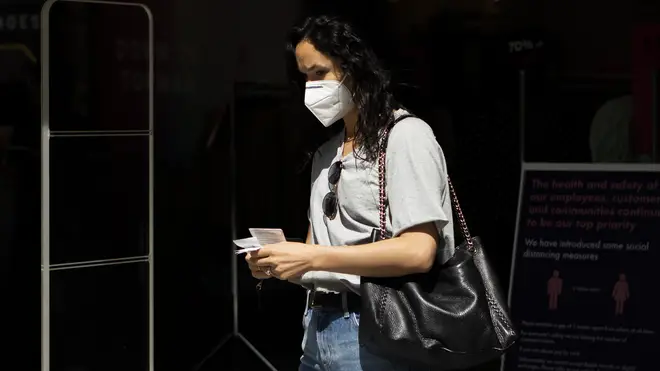
Clive Bull 1am - 4am
24 July 2020, 00:34

Homemade face coverings should be made with at least two layers, but preferably three, to stem the spread of Covid-19, new research suggests.
From today, coverings over the nose and mouth are not compulsory in all shops in England, following rules already put in place by Scotland.
The public are advised by the Government to wash their hands before putting a covering or mask on or taking it off, and to avoid touching their eyes, nose, or mouth while wearing one.
Face coverings should be stored in a plastic bag until they can be washed or disposed of, the Department of Health said.
Experts found one layer of cotton T-shirt material is fairly effective as a barrier against droplets expelled during speaking, but two are "significantly better at reducing the droplet spread caused by coughing and sneezing".
Three layers would be even better, the researchers said, and their study found surgical disposable masks offer the best protection of all.

In England, the Department of Health has published guidance for the public on how to make a home-made mask.
It recommends "two or three 25cm x 25cm squares of cotton fabric" sewn together and attached to the ears with elastic.
The Government and the World Health Organisation (WHO) have been keen to advise people to make their own cloth face coverings in the hope surgical masks will be reserved for health workers.
For the new study, published in the journal Thorax, experts from the University of New South Wales in Sydney, Australia, tested three types of masks.
Read more: Everything you need to know about new face-covering rules
Read more: Face masks compulsory in England’s shops, banks and post offices from tomorrow
Their one-layer face covering was made using a cotton T-shirt material, the two-layer covering was prepared by sewing two strips together, and the third was a surgical mask.
A tailored LED lighting system and a high-speed camera were used to capture the light scattered by droplets and aerosols expelled during speaking, coughing and sneezing while wearing the different types of mask.
The volunteer who took part was healthy with no respiratory infection. Tissue paper was put up the nose to stimulate sneezing.
The researchers concluded: "From the captured video it can be observed that, for speaking, a single-layer cloth face covering reduced the droplet spread but a double-layer covering performed better.
"Even a single-layer face covering is better than no face covering.
"However, a double-layer cloth face covering was significantly better at reducing the droplet spread caused by coughing and sneezing.

Sadiq Khan: "Face masks will be mandatory for the foreseeable future"
"A surgical mask was the best among all the tested scenarios in preventing droplet spread from any respiratory emission.
"These visualisations show the value of using face masks and the difference between types of masks."
The home-made masks in the study were made with 175 g/m2 cotton fabric, with a thread count of 170 per inch.
The researchers said other factors contribute to the effectiveness of cloth face masks, such as design and fit, as well as the frequency of washing.
But they added: "In case of shortages of surgical masks, a cloth face covering with at least two layers is preferable to a single-layer one.
"Guidelines on home-made cloth masks should stipulate multiple layers."
The team pointed to another study which showed a 12-layer cotton mask is as effective as a surgical mask, but a single-layer cloth mask does not protect against coronaviruses.
They said: "There is a need for more evidence to inform safer cloth mask design, and countries should ensure adequate manufacturing or procurement of surgical masks.